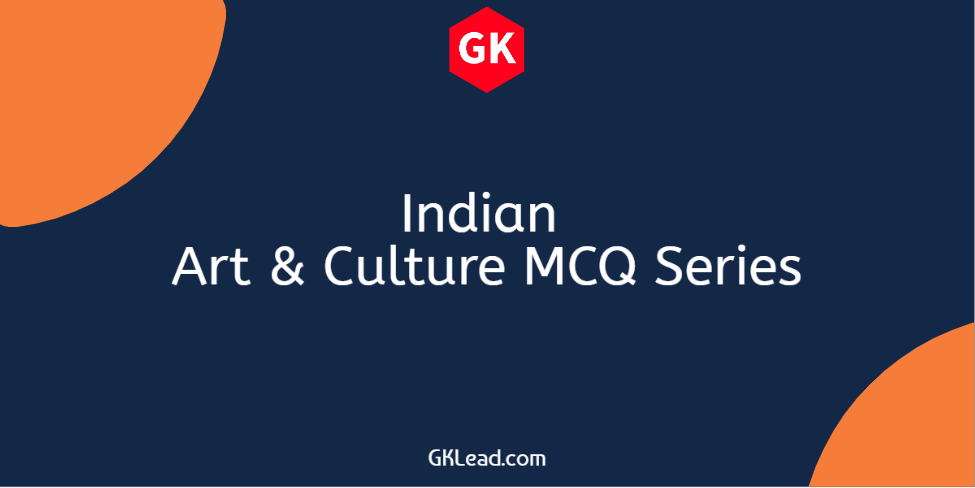Indian Art & Culture MCQ Set-17
Bhakti Movement GK MCQ for competitive examinations in India such as UPSC, SSC CGL, SSC CHSL, NDA, State PSC, Police recruitment and various government job recruitment examination by the Government of India, PSUs and the state Governments in India.
Q.1 Gangasati, a saint poet of the Bhakti tradition composed devotional songs in which of the following language?
A. Marathi
B. Bengali
C. Gujarati
D. Tamil
Answer: C. Gujarati
Q.2 Who among the following is recognized as the founder of the Bairagi Sampradaya, the largest monastic Hindu renunciant community in modern time?
A. Ramananda
B. Nanak
C. Ravidas
D. Jayadeva Goswami
Answer: A. Ramananda
Note: Ramananda is recognized as the founder of the Bairagi Sampradaya (popularly known as Ramanandi sect), the largest monastic Hindu renunciant community in modern times.
Q.3 Who was the guru of Kabir?
A. Ramananda
B. Namdev
C. Tukaram
D. Ravidas
Answer: A. Ramananda
Note: Kabir is widely believed to have become the first disciple of the Bhakti poet-saint Swami Ramananda in Varanasi, known for devotional Vaishnavism with a strong bent to monist Advaita philosophy teaching that God was inside every person, everything.
Q.4 Ravidassia religion, formed in the 21st centaury out of which of the following religion?
A. Hinduism
B. Sikhism
C. Buddhism
D. Jainism
Answer: B. Sikhism
Note: Ravidassias belief that Ravidas is the supreme and they respect all the gurus of Sikhism as Ravidas’s teachings are found at the Guru Granth Sahib. Ravidassia religion was formed following the murder of their cleric Ramanand Dass in Vienna in 2009, where the movement declared itself to be a religion fully separated from Sikhism.
Q.5 Chaitanya Mahaprabhu was an ascetic Hindu monk and social reformer in 16th century was from:
A. Assam
B. Bengal
C. Bihar
D. Tamil Nadu
Answer: B. Bengal
Note: Chaitanya Mahaprabhu was a 15th century Indian saint who was also considered as the combined avatar of Radha and Krishna by his disciples.
Q.6 Which of the following is associated with Sufi saints?
A. Khanjah
B. Dakhma
C. Tripitaka
D. None of these
Answer: A. Khanjah
Note: Khanjah is a place meant for sufi brotherhood gathering. It is a place for spritual retreat and Character reformation. It is also known as ‘Ribat.
Q.7 Which of the following is not a common feature of Sufism and the Bhakti movement?
A. Worship of idols
B. Love for personal god
C. Mysticism
D. None of these
Answer: A. Worship of idols
Q.8 Abhang or Abhanga, a form of devotional poetry of Maratha region sung in praise of which of the following Hindu deity?
A. Vitthal
B. Shiva
C. Rama
D. Durga
Answer: A. Vitthal
Note: Abhang or abhanga is a form of devotional poetry sung in praise of the Hindu god Vitthal, also known as Vithoba. Lord Vitthal is a manifestation of the Hindu God Vishnu.
Q.9 The famous Bhakti saint belonged to the royal family of Mewar is:
A. Ramdas
B. Meerabai
C. Tukaram
D. Namdev
Answer: B. Meerabai
Note: Meerabai was Rajput Princess of Mewar. She was poet, singer and the saint of Vaishnava Bhakti movement. She was a great devote of Lord Krishna.
Q.10 Who among the following Sufi saint introduced the institution of Langar in the Punjab region?
A. Baba Farid
B. Saiyid Mummed
C. Shah Alam Bukhai
D. None of these
Answer: A. Baba Farid
Note: Baba Farid (c. 4 April 1179 – 7 May 1266) or Fariduddin Ganjshakar first introduced the institution of the Langar (Sufism) in the Punjab region.
List of Indian Art & Culture MCQ sets from GKLead.com
- Indian Art & Culture MCQ Set-1
- Maurya Empire Culture MCQ Set-2
- Gupta Empire Culture MCQ Set-3
- Gupta Empire Culture MCQ Set-4
- Gupta Empire Art MCQ Set-5
- Ancient Indian Art MCQ Set-6
- Ancient Indian Art MCQ Set-7
- Medieval India Culture MCQ Set-8
- Indian Art & Culture MCQ Set-9
- Indian Classical Music MCQ Set-10
- North East India Festival MCQ
- South Indian Festival MCQ-12
- Chola Empire Art MCQ Set-13
- Mughal Empire Art MCQ Set-14
- Bhakti Movement MCQ Set-15
- Bhakti Movement MCQ GK Set-16
- Bhakti Movement MCQ Set-17
- Modern Art and Culture MCQ Set-18
- Indian Art & Culture MCQ Set-19
- Ancient Indian Art MCQ Set-20

